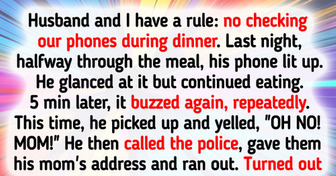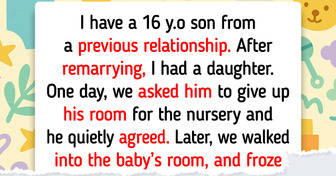17 People Recalled Their Meetings With Celebrities and Shared What Famous People Are Like in Real Life

We, as humans, are all uniquely special, and we carry our differences with us while doing everyday things, and this includes learning styles. A learning style is a way we study and maintain information. It’s important to begin paying attention to your child’s learning behavior to discover their strengths. Although they may fit into a certain category, they can shine through different areas as well — that’s why challenging them occasionally can be a good idea.
We at Bright Side love sharing helpful parenting information. So we’ve prepared a list of learning styles that may help you rediscover your child and have a positive impact on them so they can flourish in the future.
As the word itself states, visual learners are best at learning through watching. This style may be considered the most common learning style because teachers often use this technique in classrooms. Kids grasp the teacher’s body language and gestures to study, and are also very creative, thinking in pictures.
These children have their preferences — they like to scribble when they listen to a lecture, they write down their tasks for the day, and may always remember visual details rather than written texts.
A kinesthetic learner is when a child learns through moving and doing something. They usually have a difficult time staying still for extended periods, and they might tend to break things in order to comprehend them.
They may choose to create things with plasticine instead of writing or jotting down information. When it comes to reading, your child may choose a book that has objects coming out of it, like small entrances that open or fuzzy materials that can be felt.
These learners prefer studying something while hearing it out loud or speaking out loud. The best thing you can do for your child is to motivate them to keep talking. They may often talk to themselves, remember people by their names (not faces), and can be easily disturbed.
For instance, if you want your child to learn how to spell something, have them say it to you. You may also tape your kid reading a school task and then have them listen to themselves, as this can help them learn better.
Kids with an interpersonal learning style, also known as a social learning style, work best by talking with other people. These kids love to spend time with their friends and engage well in group activities. They also like to talk about what they’ve learned with their classmates and are very good at understanding them.
However, it’s important for your child to know that learning independently is crucial, too. That’s why, if your child has a project assigned to them, you can try to work on it together — have your kid do half of it while you do the other half, then share each other’s work.
This learning style is also known as solitary, and it is contrary to social learning. These kids love learning by themselves and are best at it. They enjoy studying in a quiet spot and are highly conscious of themselves.
It may be best to motivate them to use a journal for support and also give them their “alone time.” However, since they may find it hard to introduce themselves to others, encourage them to do so by slowly surrounding themselves with other people.
The verbal learning style is generally muddled with the auditory one, but even though they have some resemblance, they are not very similar. These kids enjoy both hearing and reading words.
They really love words and are great at learning new languages. Their strengths may most likely be writing and reading. When given instructions, try to encourage your child to write frequently, and also introduce them to new words every day.
If your child loves math class, then they may be a logical learner. These kids love to look at different patterns and be organized through logic. They love to see numbers and don’t really enjoy reading a lot — they may prefer to get right to the point.
They’re ambitious and curious, but may have a hard time with creative writing. Try to teach them to make a list of specific dates for history class, or break down information into graphics or tables.
Which learning style category do you think your child fits into? Will you incorporate some of these tips to help them succeed?











